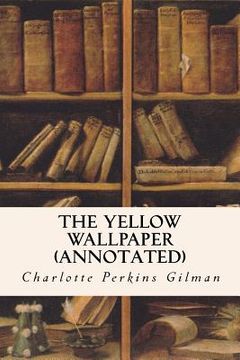Synopsis "THE YELLOW WALLPAPER (annotated)"
"The Yellow Wallpaper" (original title: "The Yellow Wall-paper. A Story") is a 6,000-word short story by the American writer Charlotte Perkins Gilman, first published in January 1892 in The New England Magazine. It is regarded as an important early work of American feminist literature, illustrating attitudes in the 19th century toward women's health, both physical and mental. Presented in the first person, the story is a collection of journal entries written by a woman whose physician husband (John) has rented an old mansion for the summer. Forgoing other rooms in the house, the couple moves into the upstairs nursery. As a form of treatment, the unnamed woman is forbidden from working, and is encouraged to eat well and get plenty of exercise and air, so she can recuperate from what he calls a "temporary nervous depression - a slight hysterical tendency", a diagnosis common to women in that period. The story details the descent of a young woman into madness. Her supportive, though misunderstanding husband, John, believes it is in her best interests to go on a rest cure after the birth of their child. The family spends the summer at a colonial mansion that has, in the narrator's words, "something queer about it". She and her husband move into an upstairs room that she assumes was once a nursery, having it serve as their bedroom due to its multitude of windows, which provide the air so needed in her recovery. In addition to the couple, John's sister Jennie is present; she serves as their housekeeper. Like most nurseries at the time the windows are barred, the wallpaper has been torn, and the floor is scratched. The narrator attributes all these to children, as most of the damage is isolated to their reach. Ultimately, though, the reader is left unsure as to the source of the room's damage. The narrator devotes many journal entries to describing the wallpaper in the room - its "yellow" smell, its "breakneck" pattern, the missing patches, and the way it leaves yellow smears on the skin and clothing of anyone who touches it. She describes how the longer one stays in the bedroom, the more the wallpaper appears to mutate, especially in the moonlight. With no stimulus other than the wallpaper, the pattern and designs become increasingly intriguing to the narrator. She soon begins to see a figure in the design, and eventually comes to believe that a woman is creeping on all fours behind the pattern. Believing she must try to free the woman in the wallpaper, the woman begins to strip the remaining paper off the wall. On the last day of summer, she locks herself in her room to strip the remains of the wallpaper. When John arrives home, she refuses to unlock the door. When he returns with the key, he finds her creeping around the room, circling the walls and touching the wallpaper. She exclaims, "I've got out at last, ...in spite of you and Jane?", and her husband faints as she continues to circle the room, stepping over his inert body each time she passes. Gilman used her writing to explore the role of women in America at the time. She explored issues such as the lack of a life outside the home and the oppressive forces of the patriarchal society. Through her work Gilman paved the way for writers such as Alice Walker and Sylvia Plath.[6] In The Yellow Wallpaper Gilman portrays the narrator's insanity as a way to protest the medical and professional oppression against women at the time. While under the impression that husbands and male doctors were acting with their best interests in mind, women were depicted as mentally weak and fragile. At the time women's rights advocates believed that the outbreak of women being diagnosed as mentally ill was the manifestation of their setbacks regarding the roles they were allowed to play in a male-dominated society. Women were even discouraged from writing, because their writing would ultimately create an identity and become a form of defiance for them.

